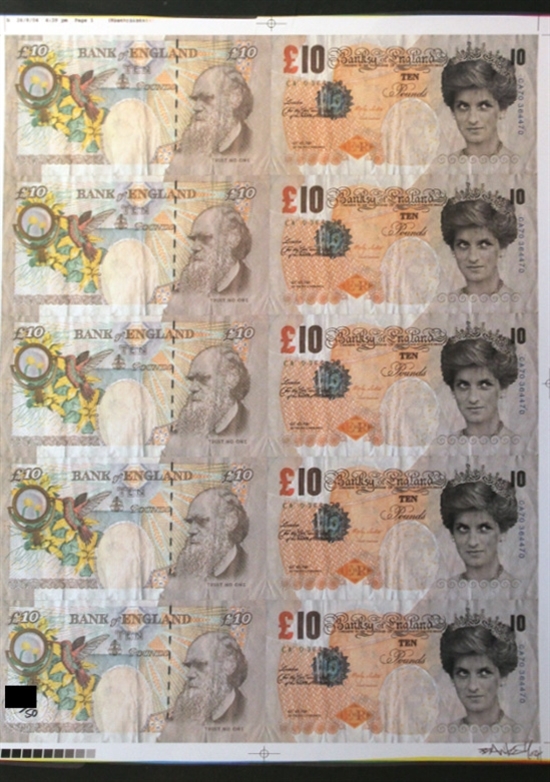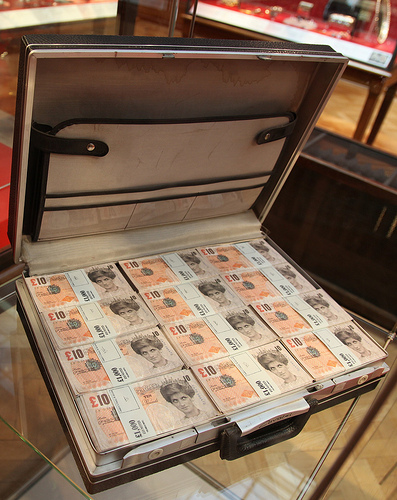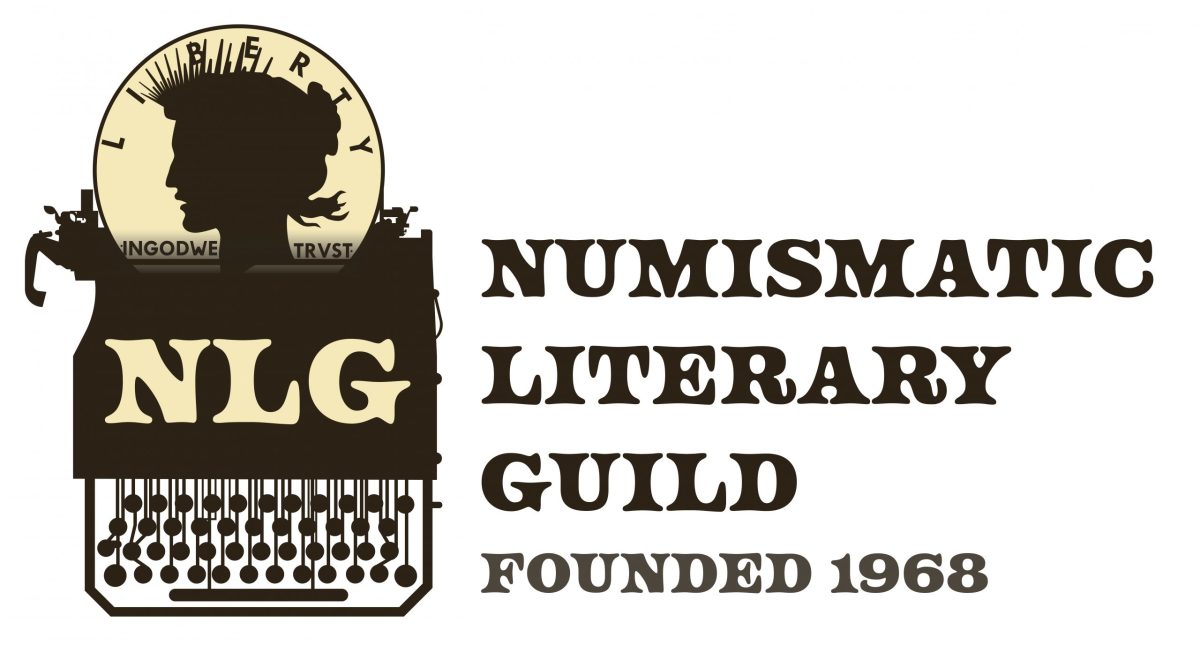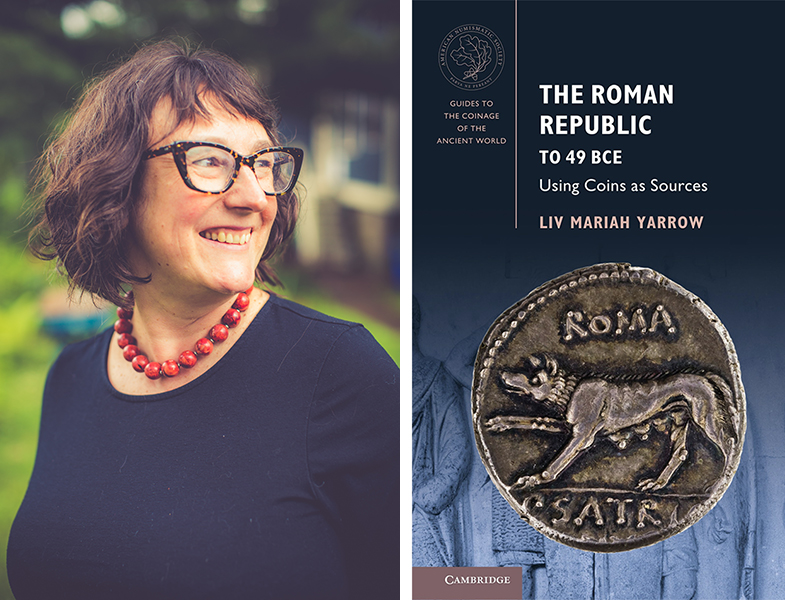ANS Acquires Authentic Banksy £10 Diana Note
The ANS recently acquired a £10 “Di-faced” banknote created by the street artist Banksy (active 1992–). The note was purchased at the 2016 New York International Numismatic Convention (NYINC) from Joseph Linzalone of Wolfshead Gallery, who, along with James Hallgate (a Banksy dealer) of Lucius Books, had jointly obtained eight of these specimens directly from Banksy’s manager in 2014.
The note parodies British £10 notes from the mid-2000s, replacing the face of Queen Elizabeth II with that of Diana, Princess of Wales. The elaborate script at the top of the note’s obverse reads, “Banksy of England”, replacing “Bank of England.” The reverse of the note remains largely unchanged except for the all-caps legend “trust no one” in the lower-right corner. Weighing ca. 1.32 g, the note is printed with inks on paper nearly identical to that used on official, UK-issued currency.
Banksy, known for his satirical and subversive street art, created a large quantity of the Princess Diana notes in August 2004, a roll of which was reportedly thrown into the crowd at the Notting Hill Carnival and at the Reading Festival that year. Some of these bills were used by festival-goers as actual currency, prompting Banksy to cease distribution. He re-used the note’s image later in a lithograph commemorating Princess Diana’s death, and also in 2009’s “Million-Pound Briefcase”. Uncut sheets of these notes have fetched as much as £16,000 and £24,000 at auction.
The creation of the banknotes went relatively unreported from 2004 until 2007 at the 10-year anniversary of Princess Diana’s death; Banksy was not sought for any counterfeiting charges, unlike American currency artist J. S. G. Boggs. In Banksy’s film Exit Through the Gift Shop, Banksy speaks to the fact that after the incidents at the festivals, he realized he had forged around £100,000,000, nearly all of which remain in his possession.
Perhaps the most unique aspect of the note the ANS acquired is its secure provenance. Genuinely authentic Banksy banknotes are exceedingly rare, and are often counterfeited/copied and sold online via auction sites such as ebay. Most sellers claim to have been at either the Nottingham Carnival or Reading Festival in 2004, and the fake notes sold are either photocopies or printed scans.
The market for Banksy notes is so great that it has generated detailed online discussions and videos of how to spot fakes. Many of the Princess Diana notes are listed online as auctions at between $200 and $600, nearly all of which are private listings that mask bidders’ identities and allow the seller to drive up the bids using shell ebay accounts. People interested in acquiring an authentic Banksy note should work through a reputable dealer or auction house.
The ANS’s Banksy note (ANS 2016.9.1) is the first specimen of fine-art paper currency at the Society, joining several examples of defaced/modified coins in the cabinet. Visitors to the ANS may schedule a time to see the Banksy note, or other items in the collection.
NOTE: On October 6, 2016, the ANS received the following notice from the Bank of England asking us to remove the images of the front and back of an official 10-pound note, which was in violation of copyright. Here is the text of the message:
From: Gemma Godfrey <gemma.godfrey@bankofengland.co.uk>
Subject: Unauthorised Bank of England Banknote Images
Message Body:
Dear Sir,
It has been brought to our attention that your company is reproducing images of Bank of England banknotes on your website:
You may not be aware, but it is a criminal offence under section 18 of The Forgery and Counterfeit Act 1981 to reproduce banknotes without prior written permission from the Bank of England. The Bank of England also owns the copyright in its banknotes.
The Bank may grant permission to reproduce banknotes, providing those reproductions meet the standards set out in our guidelines:
http://www.bankofengland.co.uk/banknotes/Pages/reproducing_banknotes.aspx
I would like to take this opportunity to remind you of the importance of requesting permission from the Bank, before producing anything containing Bank of England banknote images.
If you wish to reproduce any part of a Bank of England banknote, please follow the correct procedure and submit a banknote reproduction application form:
http://www.bankofengland.co.uk/banknotes/Pages/reproappform.aspx
Please remove the images from your website until you have obtained permission. If you have any questions, or wish to discuss the matter further, please do not hesitate to contact me.
Kind regards
Gemma
Reproductions Officer
Banknote Education Team | Notes Directorate
Bank of England | Threadneedle Street | London | EC2R 8AH
Tel: +44 (0) 20 7601 4028 | Fax: +44 (0) 20 7601 3263
Website: www.bankofengland.co.uk/banknotes









